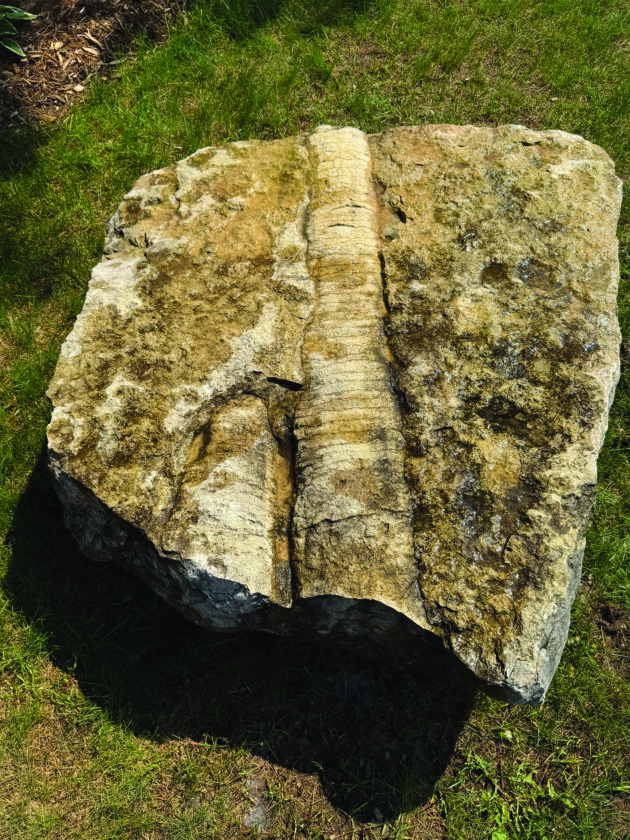Moving fossils
Houghton to move orthocones

Provided photo The orthocone fossils arrived in Houghton from Pelkie in early June. The orthocones are ancestors of today's cephalopods and swam in seas which once covered Copper Country millions of years ago during the Paleozoic Era.
HOUGHTON — The City of Houghton is contemplating moving orthocone fossils to the north side of the Portage Lake District Library from its west side to avoid sap damage from nearby pine trees. The fossils were moved from Pelkie to Houghton in the beginning of June as part of a donation. The orthocone fossils are embedded in limestone, which is a piece of Copper Country’s geologic history and offers a glimpse into the U.P.’s environment hundreds of millions years ago.
Houghton accepted the donation in 2024 from the Turunen family. The donations contained 3,600 lb. limestone blocks with each containing a fossil. Bob Wheeler, Bill Rose and Houghton council member Craig Waddell covered the finances to move the blocks to their new locations. Kody Maki of Attack Maintenance provided the equipment to haul the two large blocks to the library, while taking three smaller blocks to John’s Outdoor Learning Center.
The two blocks at the library are already on display though do not have accompanying signs or literature. They can be found under pine trees, where the orthrhocone remains can be observed. They are ancestors of cephalopod mollusks which ate arthropods and fish and lived in seas which covered Copper Country from 540 to 250 million years ago during the Paleozoic Era. Much of the top Paleozoic rock has eroded away due to moving water and glaciers, though the Pelkie area has remnants of rock specimens from the Paleozoic Era.
When the blocks can be moved, Waddell intends to place an interpretive sign next to them. Waddell plans to work with Kristine Bradof, who worked with the Western Upper Peninsula Heritage Trail Network’s sign project.
“Together with proper signage, these fossils will help children, tourists and really anyone to learn more about the Keweenaw’s amazing geological history,” Waddell said.




